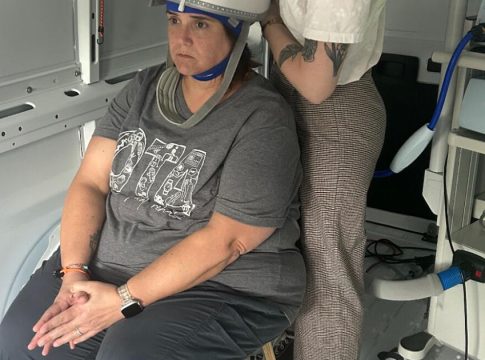Understanding Transcranial Magnetic Stimulation: A Path to Healing
In the realm of mental health treatment, Transcranial Magnetic Stimulation (TMS) is gaining attention for its promising approach to tackling major depression, particularly in cases where traditional methods fall short. This innovative technique targets specific areas of the brain to help restore emotional balance and enhance wellness.
The Science Behind TMS
TMS primarily focuses on stimulating the prefrontal cortex, a critical region involved in emotional regulation. According to Dr. George, the stimulation acts like a "reset" button for the brain, helping to bring emotional responses back into alignment. This is particularly essential for individuals who experience treatment-resistant depression—a condition where common medications do not provide relief.
For those who have been struggling for some time, repeated TMS sessions can fortify neural connections, promoting healthier emotional pathways. This consistency in treatment fosters resilience, allowing individuals to better navigate their feelings and reactions.
Bridging the Knowledge Gap
Despite its potential, TMS remains underutilized. Dr. Kerns, who has extensive experience with TMS, observes that many patients—and even healthcare providers—are unaware of its benefits. Opening a clinic dedicated to TMS and other therapeutic modalities, she aims to create a welcoming space for those undergoing treatment for anxiety and depression.
Considerations for Patients:
- Accessibility: TMS is increasingly available in urban centers, but rural areas may lack options. In South Carolina alone, it is estimated that around 75,000 individuals live with treatment-resistant depression, with many residing outside major metropolitan hubs.
- Comfort in Care: Choosing a friendly, inviting environment for treatment can ease anxiety and foster a positive therapeutic experience.
Accelerated Approaches to TMS
Traditionally, TMS requires a protocol of daily sessions for six weeks. However, groundbreaking research from Stanford University has introduced a more accelerated method, often referred to as "stacking." This approach involves multiple sessions within a single day across five consecutive days.
The results from this clinical trial were promising, revealing that nearly 80% of participants reported being symptom-free by the end of treatment. This method may offer an attractive alternative for patients seeking quicker results, especially when dealing with overwhelming feelings of hopelessness.
Moving Forward
As mental health professionals continue to explore and refine TMS as a viable treatment option, it serves as a beacon of hope for many. While navigating mental health challenges can feel isolating, it’s vital to remember that innovative solutions are available, and help is within reach.
If you or someone you know struggles with persistent depression, consider seeking information about TMS and its benefits. Engaging with a provider who understands these emerging therapies can provide a fresh perspective on the journey towards emotional well-being.
Always consult a healthcare professional before starting any new treatment.

Covers wellness, nutrition, mental health, and daily life tips.
Bio: Talia brings a background in health journalism and holistic living to help readers live better, one tip at a time.

